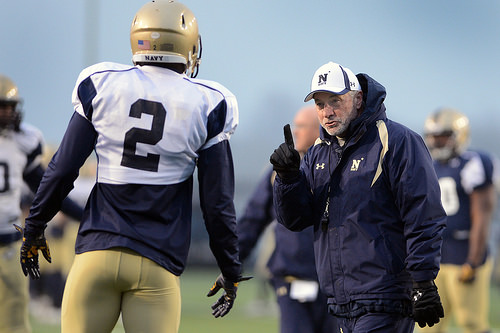- You are here:
- Home »
- Blog »
- Football »
- How to Play Free Safety
How to Play Free Safety
 Photo By: DoD News Features
Photo By: DoD News Features
The free safety position uses great all-around football players with the physical and mental skills to both be a reliable last line of defense and a playmaker in the middle of the football field. They are often the glue of a defensive secondary.
Free safeties have to be able to cover and stop the run. Knowing how to play free safety at an elite level takes a lot of factors into account:
- Size
- Speed
- Strength
- Pass Coverage
- Run Stopping
- Tackling
There are also other areas that need work, but these are the main ones. You can find out more about each skill below, or find some drills to work on your game.
Size
While size can vary at the free safety position, it usually isn’t as big of a range as you’ll see among strong safeties. Earl Thomas of the Seattle Seahawks has pretty standard size and build for the position. He is listed at 5’10” and 202 pounds. This is common at the NFL level, although his height may be a little on the short side.
If you are playing at the high school or collegiate level, you don’t need to be this big even. A good rule of thumb is that a free safety is built like a slightly oversized cornerback.
Speed
As you’ll be responsible for covering the majority of the field, speed is obviously important. Free safeties are among the fastest defenders, along with cornerbacks, because they have to be a safety valve in defending both the run and the pass.
Faster safeties may be able to have more responsibility in man-to-man coverage. This can help make the defense more versatile if they don’t always have to bring in a nickel back.
Strength
While you will rarely line up in the box and take on offensive lineman by yourself, you’ll need enough strength to provide effective press coverage and be able to tackle power running backs and tight ends.
Reading the Offense/Ball Skills
Free safeties need to be able to diagnose the offensive plays to make the right movements toward the ball. Reading keys properly can prevent the offense from any big plays and can lead to big plays for the defense.
Good ball skills go along with this. If you are reading the plays properly, you need to be able to get to the ball quickly. This good be pursuing a running back properly or getting a hand up to deflect a pass.
Pass Coverage
You’ll need to have skills in both zone and man coverage. Usually, you will be responsible for keeping all offensive players in front of you to prevent big plays.
If you are skilled in man coverage, you may be called upon to match up against sub package receivers or running backs who are running routes out of the backfield. If not this, you may be providing help over the top of good wide receivers that cornerbacks can’t handle one-on-one.
In zone coverage, you’ll usually have a deep part of the field. In this situation, you need to keep everything in front of you, read the quarterback, and break on the ball once it is in the air.
Run Stopping
A free safety is usually the last line of defense in the running game. While you won’t be called upon to be an extra linebacker or stuff runs in the backfield, you will need to be reliable in getting the running back down if they are able to leak out into the secondary. Poor tackling by free safeties can lead to chunk yardage and touchdowns. Proper pursuit angles is very important to stopping the run.
Tackling
Again, free safeties are relied upon for dependable tackling. They might not big plays in the back field, but they are the last line of defense and sometimes the only thing stopping a running back or wide receiver from finding the end zone. You’ll want to have fundamentally sound tackling skills that can bring down both shifty offensive weapons and the larger athletes.
Special Teams
If you have good open field pursuit and tackling ability, you’ll be able to provide value to your football squad on special teams.
Being a good strong safety means being a complete player who can help out the entire defense across the football field.

